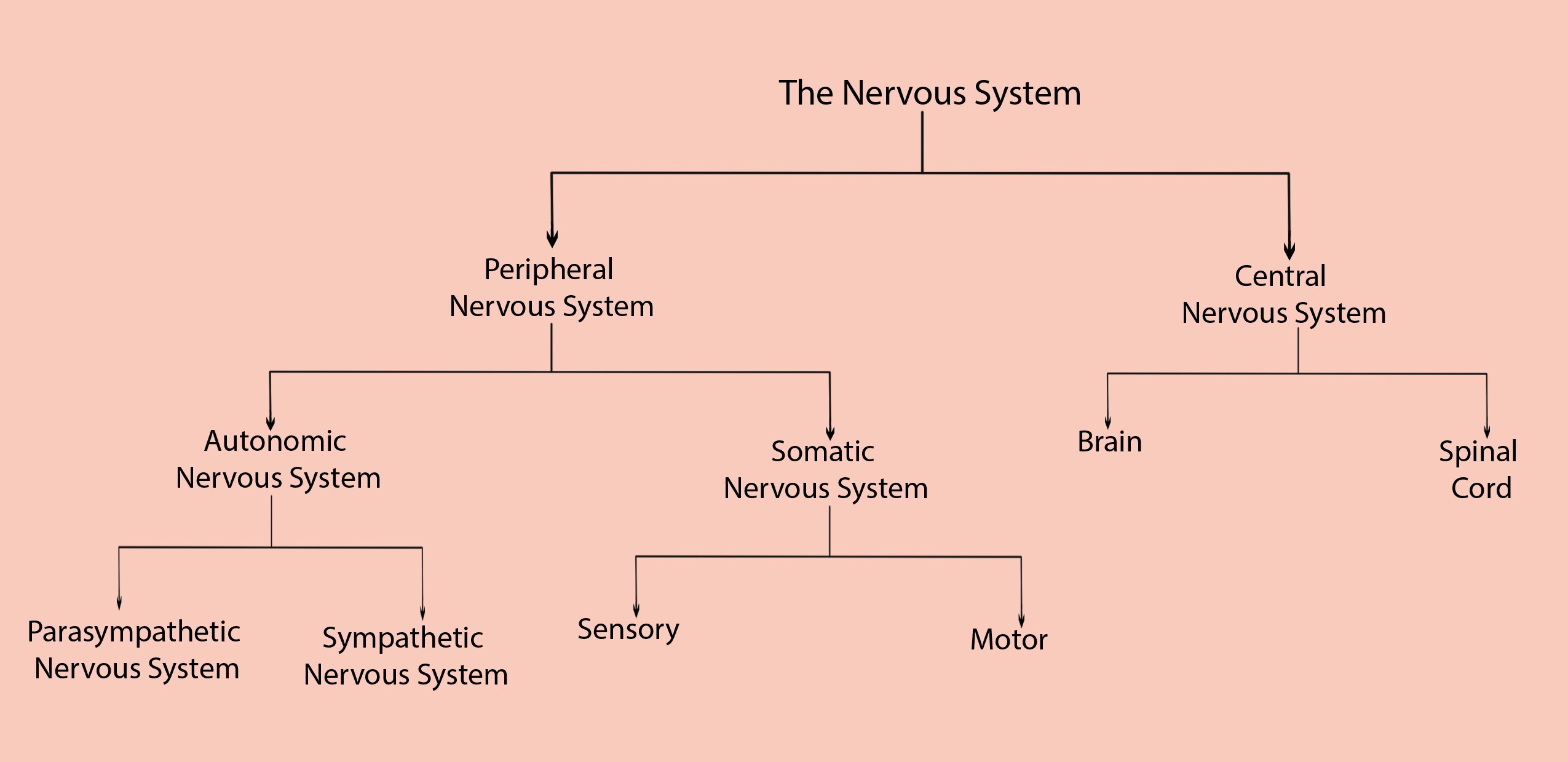
ORGANIZATION OF THE NERVOUS SYSTEM
nervous system flowchart Flowchart illustrating the human nervous system. Learn how the nerves and the cells carry messages to and from the brain with this nervous system flowchart.

ICSE Solutions for Class 10 Biology The Nervous System and Sense
A glial cell is one of a variety of cells that provide a framework of tissue that supports the neurons and their activities. The neuron is the more functionally important of the two, in terms of the communicative function of the nervous system.
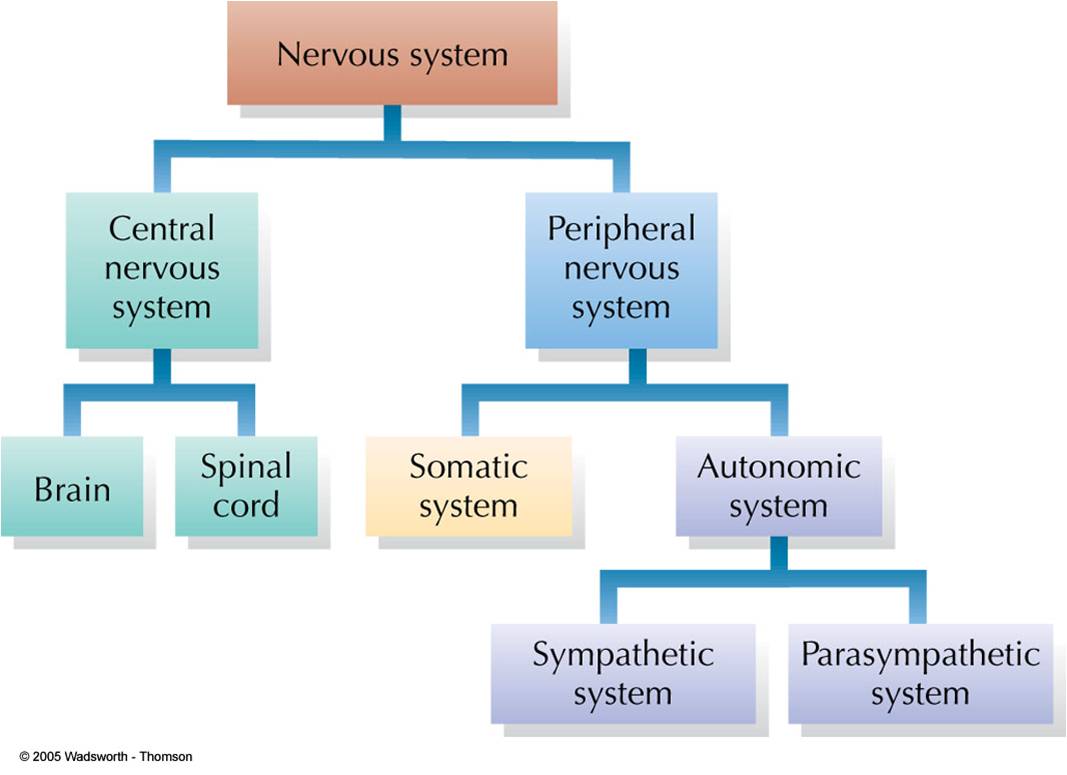
flow chart of nervous system
The human nervous system is divided into two main parts: the central nervous system (CNS) and the peripheral nervous system (PNS). These two main divisions, which are shown in Figure 1, help ensure that the three broad functions of the nervous system are carried out efficiently. Figure 1: An illustration of the two main divisions of the human.

organization of nervous system flowchart organization of the nervous
First, let's wrap our heads around some key terms and concepts. A neural pathway is a bundle of axons that connects two or more different neurons, facilitating communication between them. Tracts are neural pathways that are located in the brain and spinal cord (central nervous system).Each tract runs bilaterally; one on each side of the cerebral hemisphere or in a hemisection of the spinal cord.
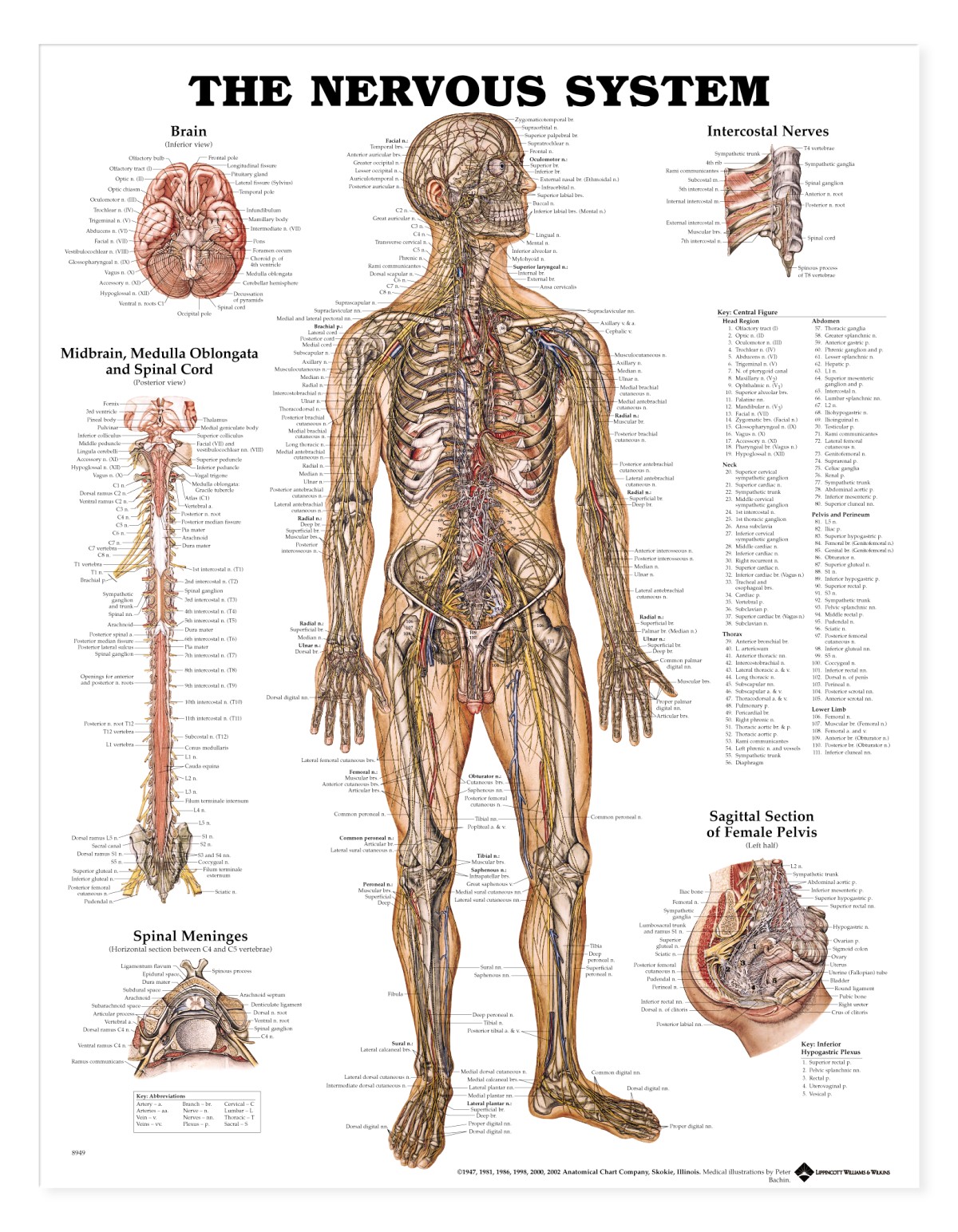
the nervous system diagram labeled
This diagram summarises how information flows from receptors to in the nervous system. Next page Detecting and responding How does your nervous system work? Revise the structure and.

Nervous System Anatomy and Physiology Nervous system, Nclex and
The central nervous system (CNS) is composed of the brain, spinal cord, and cerebellum. The peripheral nervous system (PNS) consists of sensory neurons, motor neurons, and neurons that communicate either between subdivisions of the PNS or connect the PNS to the CNS. The Human Nervous System: The major organs and nerves of the human nervous system.

Nervous System Diagram Chart Nervous System Flow Chart Diagram
The nervous system is a network of neurons whose main feature is to generate, modulate and transmit information between all the different parts of the human body. This property enables many important functions of the nervous system, such as regulation of vital body functions ( heartbeat, breathing, digestion), sensation and body movements.
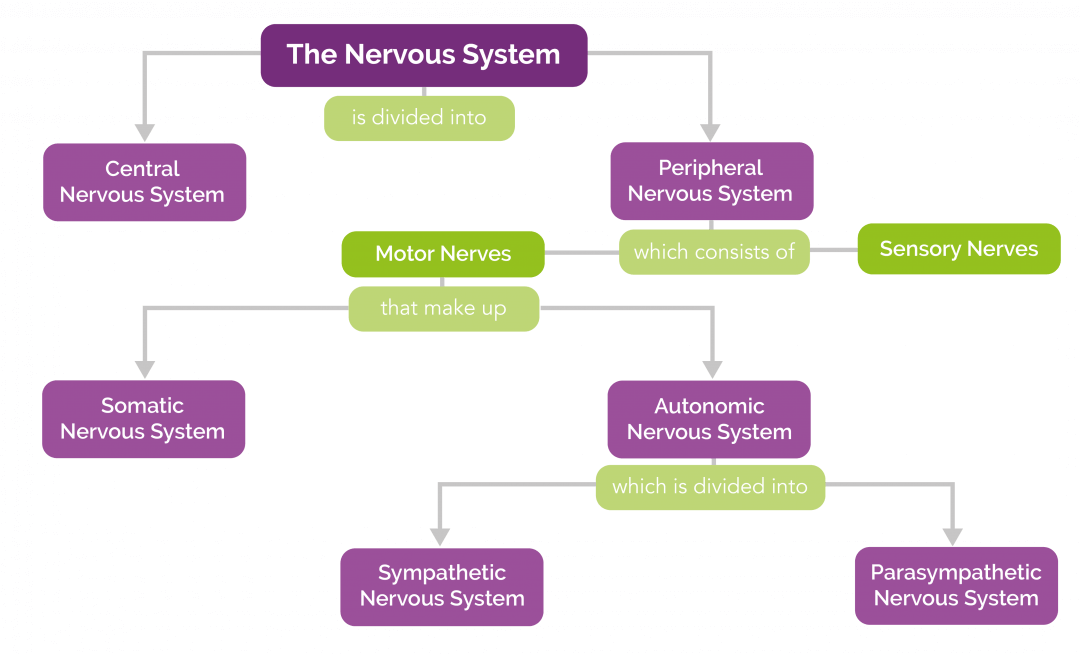
Nervous System Explained Chiropractic Wellness Centre Leicestershire
Nervous System Central Nervous System (CNS) (Brain & Spinal Cord) Peripheral Nervous System (PNS) (Cranial & Spinal Nerves ) Sensory Division (Afferent) Motor Division (Efferent) Voluntary or Somatic Nerves Involuntary or Au tonomic Nerves Sympathetic Parasympathetic Nervous System Flow Chart . Title: Nervous System Flow Chart.PDF

Structure of the Nervous System Psychology tutor2u
What does the nervous system do? Your nervous system's main function is to send messages from various parts of your body to your brain, and from your brain back out to your body to tell your body what to do. These messages regulate your: Thoughts, memory, learning and feelings. Movements (balance and coordination).
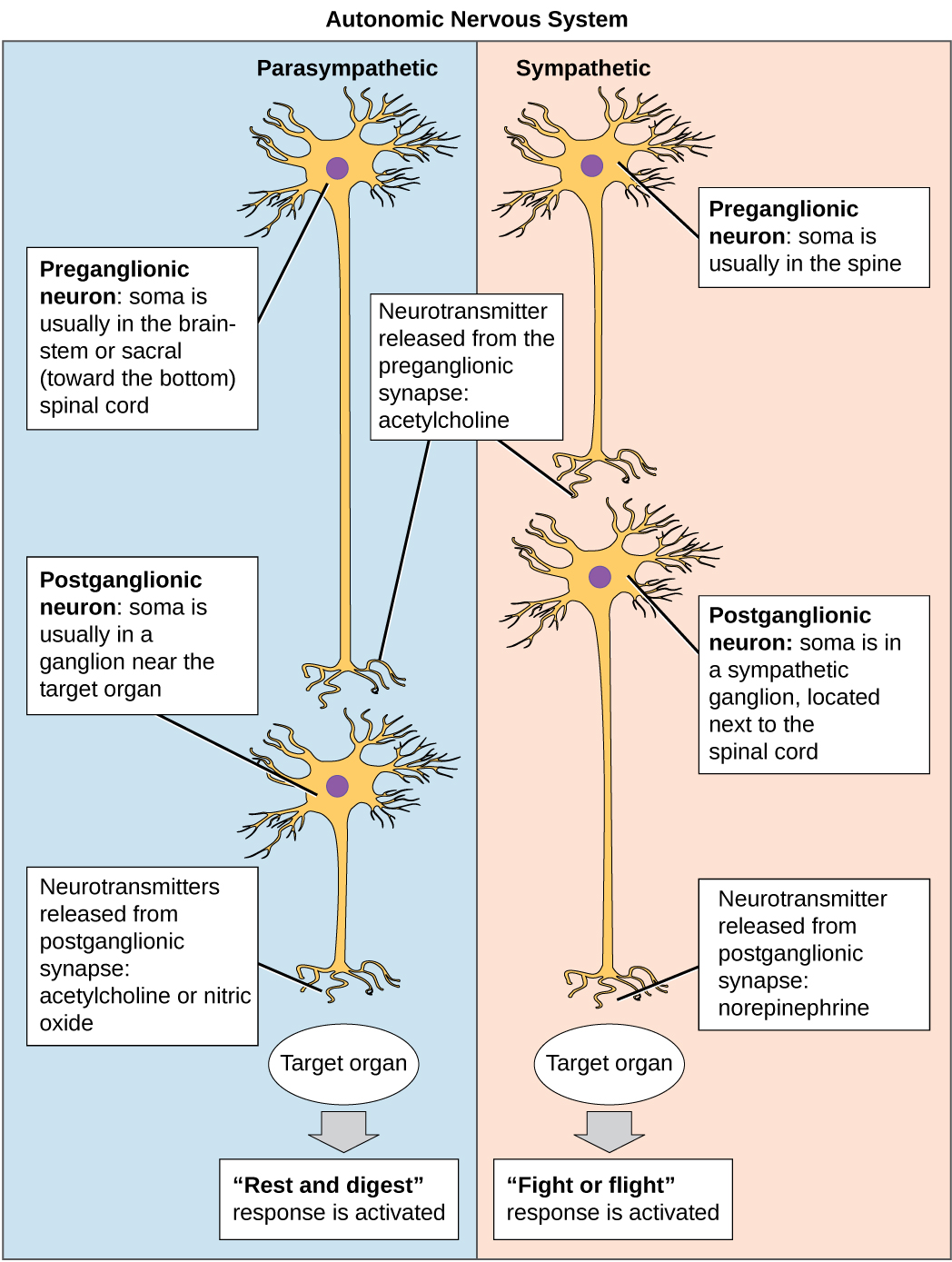
11.6 Nervous System Concepts of Biology1st Canadian Edition
human body maps nervous system Nervous System The nervous system has two major parts: the central nervous system (CNS) and the peripheral nervous system (PNS ). The central system is.
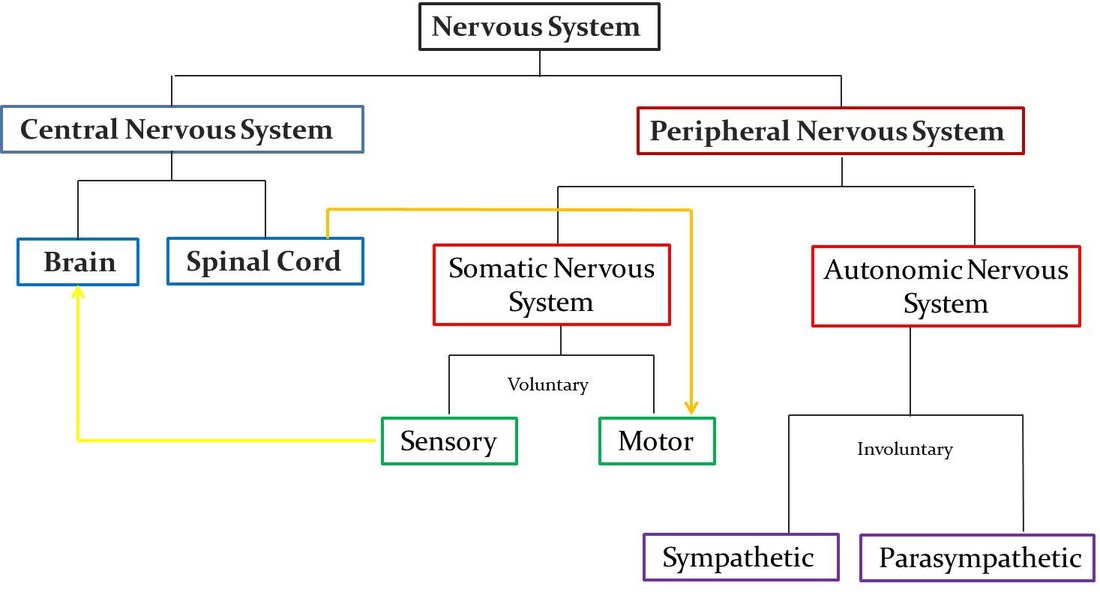
Peripheral Nervous System (PNS) SBI4U RESOURCE WEBSITE
Overview The nervous system is separated into the central and peripheral nervous systems. In addition, the sympathetic, parasympathetic, and enteric nervous systems act as parts of the autonomic nervous system. Anatomical subdivision CNS: brain and spinal cord Peripheral nervous system (PNS): Somatic nervous system: Sensory Motor ANS :

flow chart of nervous system
Flowchart nodes. Peripheral Nervous System - nerve processes that connect the CNS with glands, muscles and receptors. (cranial and spinal nerves) Somatic Nervous System - Carry impulses from the CNS to skeletal muscle tissue (voluntary) Autonomic Nervous System - Carries info from the CNS to cardiac muscle, glands, and smooth muscle (involuntary)

2.2 Human Nervous System SPM Science
In addition to letting you consciously process the threat, your nervous system triggers involuntary responses, like an increase in heart rate and blood flow to your muscles, intended to help you cope with danger. All of these processes depend on the interconnected cells that make up your nervous system.
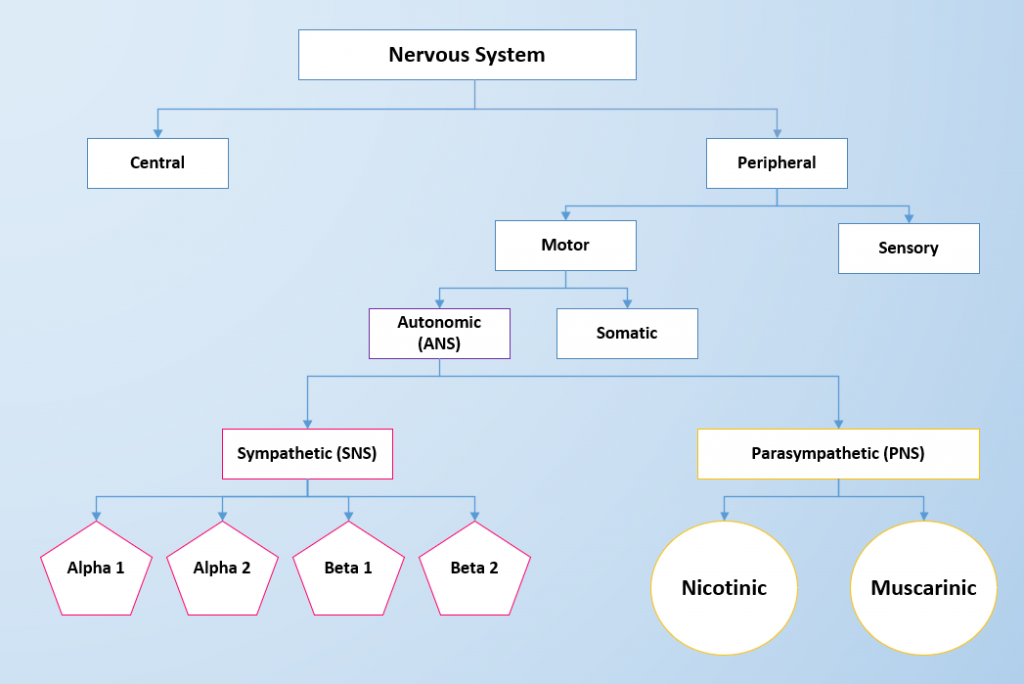
4.2 Autonomic Nervous System Basics Nursing Pharmacology
Table 11.2.1 11.2. 1: Name of structures depend on the location. A group of neuron cell bodies within the gray matter is called a nucleus in the CNS and a ganglion in the PNS. A bundle of axon within the white matter is called a tract or column in the CNS, and a nerve or nerve fiber in the PNS. CNS.

A diagram showing the Central Nervous System (CNS) and a flowchart
An Overview of the Nervous System Listen to the Audio Now that we have looked at the cells that make up the nervous system and ways in which they process and communicate information, take a look at Figure 2.5.

Pin on how to be a paramedic
Chapter Review The nervous system can be separated into divisions on the basis of anatomy and physiology. The anatomical divisions are the central and peripheral nervous systems. The CNS is the brain and spinal cord.